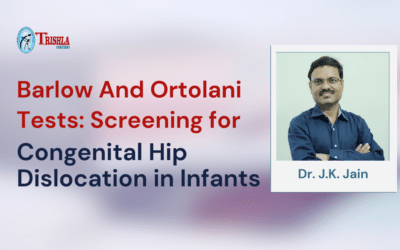Leg length discrepancy is a prevalent medical condition that can happen due to multiple reasons. The medical condition is commonly known as pelvic obliquity when it is less than 2 centimeters. This shows that the finding of a leg length inequality, to a noticeable extent, is frequent but not an anatomical phenomenon. However, it can be wholly or partially the result of functional abnormalities like pelvic distortion. You should know leg length discrepancy can be a common complication resulting from osteogenesis imperfecta in children. In such cases, the child must get timely treatment so that the condition can be appropriately managed and he can lead a regular life.
Understanding leg length discrepancy
Leg length discrepancy or Limb Length discrepancy is a medical condition that causes the complete absence of parts of the limb. These cases are generally linked to rare congenital malformations. However, leg discrepancy can also be associated with more complex changes to the entire limb. In this case, the patients will have vascular malformations, unstable joints, severe mail positioning, and partial or even complete absence of the rays or bones.
Despite the widespread discrepancies in length, international and national guidelines for managing this condition still need to be made available. So, it remains to be seen as to what methods can be used to begin the treatment. As osteogenesis imperfecta in children is the primary cause, identifying this medical condition is essential. After all, the treatment will primarily be based on it. When identified on time, it will be easier for the medical professionals to manage the condition and guarantee that the child will see some better change and recover faster.
Risks associated with leg length discrepancy
No matter the cause of the medical condition, there are numerous long-term complications. Here, it would help if you assumed that the risks to hip, spine, and knee joints are significant. So, let’s discuss the negative impact leg length discrepancy can have.
- Abnormal growth, scoliosis, and hip dysplasia
When the patient is standing with weight equally distributed on both legs, the sacrum and pelvis will be tilted to the side of the short leg. This results in relative deterioration of femoral head containment and lateral flexion of the spine. When this happens, it raises the concern that leg length discrepancy in growing children will promote the development of scoliosis or hip dysplasia (congenital hip dislocation treatment).
- Function, limping, and athletic ability
You should know the functional characteristic of leg length discrepancy is the shortening of the limb. Here, the analysis of gait has shown that the leg length discrepancy, when greater than one centimeter, can result in gait asymmetry. As the discrepancy keeps increasing, the asymmetry will also increase, and the limping will become quite noticeable.
- Back pain and osteoarthritis
There have been a few cases where leg length discrepancy has caused back pain. However, a study with more than 3000 participants has shown that this particular condition is associated with the likelihood of knee osteoarthritis. When the length discrepancy is more than one centimeter, there is an increased risk of osteoarthritis in both the lower limb and the shorter limb when compared to equal length.
Diagnosis
Leg length discrepancy can easily be identified in a clinical setting. It can be determined with an accuracy of +-1 centimeter. Now, using these measuring blocks with defined heights, the shortening can easily be corrected until the pelvis is leveled from the total height of the blocks, and so the leg length discrepancy can easily be inferred. Now, to determine the difference radiographically in leg length, the expert will take a standing full-leg radiograph with leg length equalization using blocks. However, such types of diagnosis are only required during surgical correction of the leg length discrepancy.
Treatment options available
Whether the leg length discrepancy is a result of osteogenesis imperfecta in children or any other reason, it can be treated with numerous treatment options. However, this will depend entirely on the severity of the condition and the patient’s requirements. Doctors can customize the treatment plan based on the needs.
- Conservative treatment
This treatment form is typically preferred for patients with a moderate leg length discrepancy between 2 centimeters and 5 centimeters. A full-leg length equalization is not necessary here.
- Insoles and shoe lift
The only limiting factor for leg length equalizations using insoles is shoe volume. The heel wedge insole can quickly correct a length discrepancy of up to 2 centimeters. However, a correction of up to 5 centimeters can easily be achieved with closed shoes.
- Orthosis
Show lifts of more than 5 centimeters are associated with increasing instability, so using an orthosis becomes quite important. Orthotic treatment can always lead to relative equinus and also loss of function of the ankle joint. Most patients with a leg length discrepancy of over 10 centimeters cannot be treated with a functionally superior ortho prosthesis. Using a prosthetic foot in this situation is tricky for cosmetic and space reasons.
- Surgical treatment
Surgical options are the best when the doctor has tried all the available treatment options, and nothing seems to work. They are an excellent alternative for healthy patients with a length discrepancy of more than 2 centimeters. As discussed earlier, shortening the limb and reducing shoe functionality from shoe lifts can be the primary decision-making reasons here. This functional impairment worsens when significant leg length discrepancies are managed with ortho-prosthetic treatment. So, surgical treatment such as Limb Lengthening becomes quite imperative.
Conclusion
Management of osteogenesis imperfecta in children, leg length discrepancy, or other medical conditions can become extremely difficult. This is why starting the treatment as early as possible is essential. You can consult Trishla Ortho to trust the best medical professionals out there. Whatever your child’s medical condition, the professionals can customize the plan that works well for him. They will guarantee your child can see better results from the treatment and recover properly.











